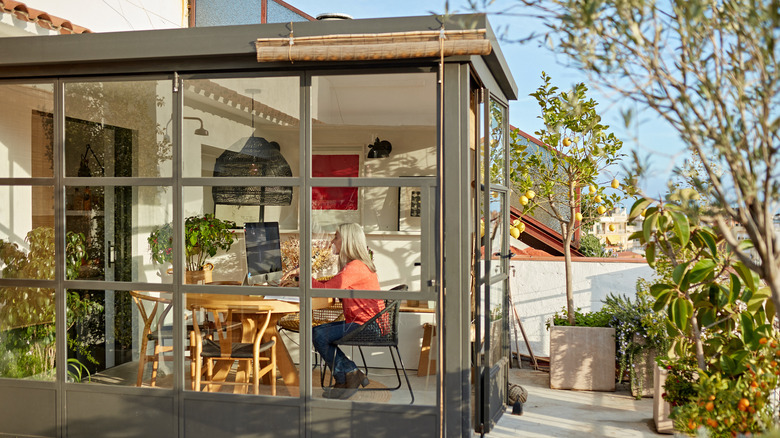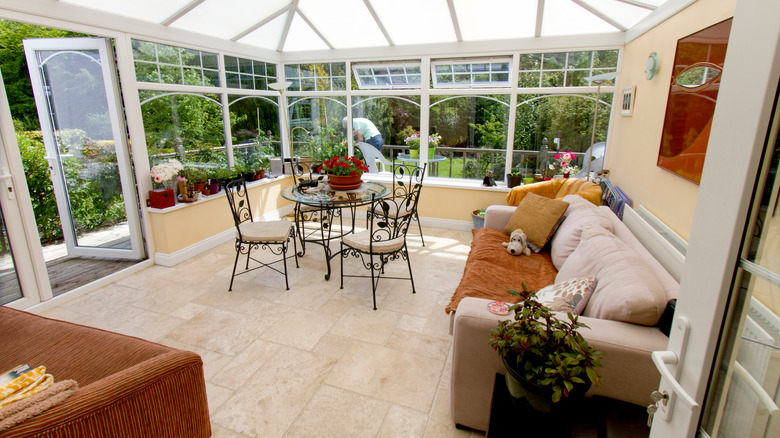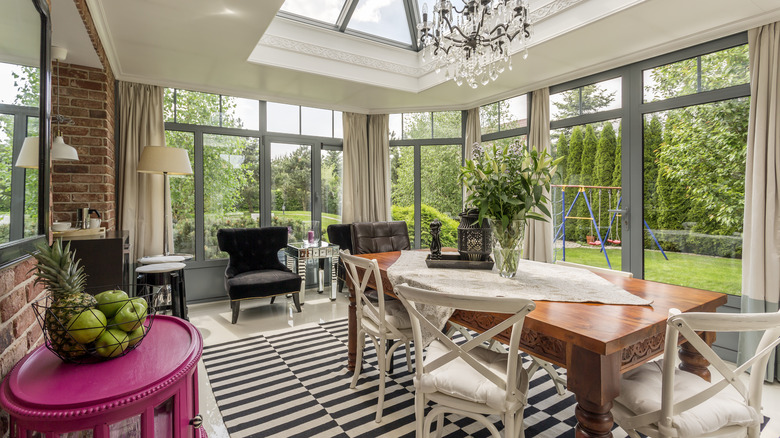Tips On The Best Spot To Build A Sunroom
If you're planning to add a sunroom to your home, you may be wondering which side of your house to attach it to. New additions to homes can be expensive, so it's important to make sure you'll get the most out of your sunroom once it's done. When deciding where the room should be located, you'll first need to determine what the room's main purpose will be. If you're looking for a bright breakfast nook, you'll want to make sure your sunroom is at least partially facing east, so you won't miss those early morning sunrises.
For homeowners living in colder climates, a sunroom that faces south will bring in more light during the winter, while a southeastern sunroom will provide morning light but be shaded during the afternoon. Placing a sunroom on the northern side of your home can be helpful for those with warmer weather, as it will stay shady and cool on hot afternoons.
Things to consider when adding a sunroom
Deciding where to place your new sunroom might seem like a simple choice, but there are several factors to consider. If you enjoy watching sunsets but the western portion of your home is shaded by trees, placing a sunroom there could end up being disappointing. Besides finding a spot with the light you like best, you'll also need to think about how the construction of your sunroom will affect the rest of your home.
Most sunrooms are attached to either the front or back of the house since this is where there is typically more space for an addition to your home. If the side of your house where you plan to build your sunroom has a load-bearing wall that will need to be removed, the cost of the addition could increase substantially. This could also cause your wiring and plumbing to need to be rerouted. The cost of your project may also run up if the ground where you wish to build needs to be excavated or leveled.
The best spots for sunrooms
The view out of your sunroom's windows is also an important factor in deciding placement. If there is a beautiful landscape on one side of your home, this may be a good spot for your sunroom, especially if you want the space to be inspiring, like an art studio or a library. You could also place your sunroom by your patio, garden, or backyard, so you can watch your plants grow or your children play while being comfortable indoors.
If you want your sunroom to be easily accessible to guests, make sure that it connects to a main portion of the home, like the living room, kitchen, or dining room. While a sunroom attached to a bedroom can make for a calm, private escape, it will not be as convenient when you have company. A sunroom that tends to get hot and connects to a main room can also cut down on heating costs in the winter.


